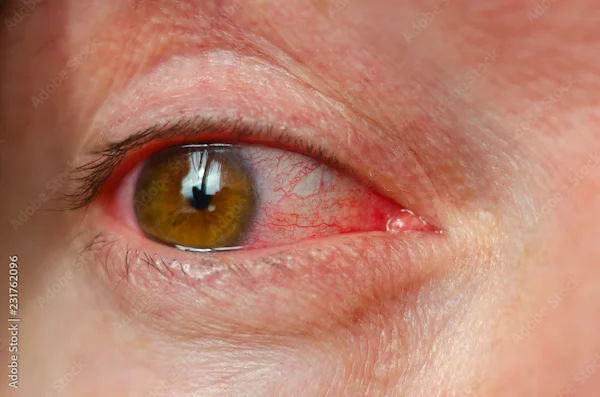What Leads To Dilated Cardiomyopathy And Its Cure?
Learn what leads to dilated cardiomyopathy, how it changes heart function, and the difference between cure and remission. Discover treatment options, lifestyle strategies, and monitoring tips.

Written by Dr. Siri Nallapu
Reviewed by Dr. D Bhanu Prakash MBBS, AFIH, Advanced certificate in critical care medicine, Fellowship in critical care medicine
Last updated on 24th Oct, 2025

Introduction
If you or a loved one has been told you have dilated cardiomyopathy, you may be wondering: What caused it—and is there a cure? Dilated cardiomyopathy is a condition where the heart’s main pumping chamber stretches and weakens, making it harder to push blood forward. That can cause symptoms like breathlessness, swelling, and fatigue. The good news: many people improve dramatically with the right care. Some even return to near-normal heart function when a reversible trigger is found and treated.
In this guide, we’ll unpack what leads to dilated cardiomyopathy, what “cure” really means, and which treatments and daily habits make the biggest difference. We’ll walk through symptoms, diagnosis, and proven therapies; explain special situations like pregnancy-related and alcoholic cardiomyopathy; and share practical tips for living well. Whether you’re newly diagnosed or supporting someone you love, this article translates the latest medical guidance into clear, compassionate advice—and points you to next steps if you need help now.
What is Dilated Cardiomyopathy?
Dilated cardiomyopathy (DCM) occurs when the left ventricle—the heart’s main pumping chamber—stretches, becomes thinner, and can’t contract effectively. Doctors measure this using the left ventricular ejection fraction (LVEF). In DCM, LVEF typically falls below 40% (normal is roughly 50–70%), which means less oxygen-rich blood reaches your organs. As the ventricle dilates, heart valves may leak (especially the mitral valve), and pressure can back up into the lungs, causing breathlessness and swelling of legs/abdomen.
How it differs from other cardiomyopathies
Cardiomyopathy is a family of diseases affecting heart muscle:
• Dilated cardiomyopathy: enlarged, weakened chambers
• Hypertrophic cardiomyopathy: thickened heart muscle
• Restrictive cardiomyopathy: stiff walls that limit filling
• Arrhythmogenic cardiomyopathy: scarring in the right and/or left ventricle that predisposes to rhythm problems
DCM is a leading cause of heart failure and the most common cardiomyopathy referred for heart transplant. It can be “nonischemic” (not due to artery blockages) or “ischemic” (from prior heart attacks). This distinction matters because treatment and prognosis can differ.
How Common Is It and Who Gets It?
DCM affects adults and children, but is most often diagnosed in middle-aged adults. It accounts for a large proportion of nonischemic heart failure worldwide, with estimates suggesting familial or genetic causes in about 20–35% of cases. Importantly, survival and quality of life have improved substantially over the last two decades thanks to earlier diagnosis and evidence-based therapies.
Familial and genetic dilated cardiomyopathy
Many people with DCM have a genetic predisposition. Variants in genes like TTN, LMNA, MYH7, and others may weaken the heart over time or increase susceptibility to triggers like viral infections or pregnancy. If a first-degree relative is diagnosed with DCM, cardiology societies recommend screening family members with a clinical evaluation and echocardiography, and considering genetic counseling/testing where appropriate. This is one area where finding the cause can change management—some gene variants may influence device decisions like early ICD placement for arrhythmia prevention.
What Leads to Dilated Cardiomyopathy? Causes and Triggers
Here are the causes:
Genetic variants
• TTN truncating variants are among the most common, often associated with nonischemic DCM and potential for recovery with therapy in some cases.
• LMNA, FLNC, and RBM20 variants can carry higher arrhythmia risk, prompting earlier consideration of an implantable defibrillator (ICD).
Viral myocarditis and inflammation
A viral infection (like Coxsackie, adenovirus, or SARS-CoV-2) can inflame the heart muscle (myocarditis), temporarily weaken it, and in some, lead to DCM. Many recover fully; others develop lasting dilation and reduced ejection fraction. Cardiac MRI helps identify inflammation or scarring that guides treatment and prognosis.
Alcohol, toxins, and chemotherapy
Chronic heavy alcohol use can cause “alcoholic cardiomyopathy,” often reversible with complete abstinence and GDMT. Certain chemotherapy agents or targeted therapies can injure the heart; early recognition and cardio-oncology care can mitigate long-term damage.
Hormonal and metabolic causes
Thyroid disorders (both over- and underactive), severe vitamin deficiencies, diabetes, iron overload, and chronic kidney disease can contribute to DCM. Treating the underlying problem often improves cardiac function, sometimes dramatically.
Peripartum (pregnancy-related) cardiomyopathy
Peripartum cardiomyopathy arises late in pregnancy or shortly after delivery. Many women recover partially or fully within six months to a year with appropriate therapy; future pregnancy planning requires careful, individualised counselling.
Arrhythmia-induced cardiomyopathy
Fast, persistent heart rhythms (like atrial fibrillation with rapid rates or certain supraventricular tachycardias) can weaken the heart over weeks to months. Rate/rhythm control or ablation often leads to striking recovery—one of the most clearly reversible forms of DCM.
Ischemic versus non-ischemic disease
Blocked heart arteries (coronary artery disease) can cause heart attacks and dilation of damaged muscle. Reopening arteries plus GDMT may improve function. Nonischemic DCM arises from the causes above, sometimes with a combination of triggers.
Symptoms and When to Seek Care
Here are the symptoms:
Typical heart-failure symptoms
• Breathlessness on exertion or at rest
• Swelling of feet, legs, or abdomen
• Fatigue, reduced exercise tolerance
• Orthopnea (needing extra pillows) or waking at night breathless
• Rapid or irregular heartbeat, chest discomfort, dizziness
Red flags that need urgent attention
• Fainting, severe chest pain, pink frothy sputum, or severe breathing difficulty require emergency care.
• If symptoms such as breathlessness, swelling, or palpitations persist beyond two weeks, consult a doctor online with Apollo 24|7 for further evaluation. Early testing can speed diagnosis and treatment.
How Doctors Diagnose DCM?
Here’s how:
Clinical exam, ECG, echocardiography, and natriuretic peptides
Diagnosis starts with history and physical exam, looking for fluid buildup, murmurs, and rhythm abnormalities. An ECG can detect conduction delays or arrhythmias. Transthoracic echocardiography confirms LV dilatation and reduced ejection fraction; it also assesses valve leakage. Blood tests like BNP or NT-proBNP support the diagnosis of heart failure and help track response to therapy. Apollo 24|7 offers convenient home collection for tests such as BNP, thyroid function, iron studies, and basic chemistries.
Cardiac MRI and what “scar” means
Cardiac MRI provides high-resolution images of heart structure and tissue. A pattern called late gadolinium enhancement (LGE) suggests scar or fibrosis and helps predict recovery and arrhythmic risk. Nonischemic LGE patterns differ from ischemic scar. Absence of LGE often correlates with better chances of reverse remodelling on therapy.
Coronary testing to rule out blockages
Because coronary artery disease can mimic DCM, many adults undergo coronary CT angiography or invasive angiography to exclude obstructive disease, especially when risk factors or chest pain are present.
Genetic testing and biopsy: who needs them
Genetic testing is considered in those with a family history, early-onset disease, high-risk features, or no clear cause. Endomyocardial biopsy is reserved for select cases when results would change management.
Is There a Cure? What “Cure” Means in Cardiomyopathy
Reversible causes that can normalise the heart
In cardiology, “cure” often means removing the cause and seeing sustained normalisation of heart size and function. Several scenarios can be functionally curable:
• Tachycardia-induced cardiomyopathy: Fixing the fast rhythm commonly restores normal LVEF within months.
• Alcoholic cardiomyopathy: Strict abstinence plus GDMT leads to meaningful recovery in many; some achieve near-normal function.
• Thyroid, thiamine deficiency, and iron overload: Treating the underlying endocrine or nutritional cause can reverse dysfunction.
• Early peripartum cardiomyopathy: Many women improve substantially within 6–12 months.
Remission versus cure
For many with idiopathic or genetic DCM, the goal is remission—meaning symptoms are controlled, the heart remodels favorably, and life returns close to normal. Even when LVEF normalises, stopping medicines can risk relapse. Long-term, low-dose therapy is often continued to maintain remission.
Transplant and mechanical support
For advanced, refractory cases, left ventricular assist devices (LVAD) and heart transplant are life-saving. While a transplant can be considered a “definitive cure” for end-stage heart failure, it requires lifelong immunosuppression and specialised follow-up.
Evidence-Based Treatments That Improve Outcomes
Guideline-directed medical therapy (GDMT)
Modern heart-failure care uses four foundational medication groups that reduce symptoms, hospitalisations, and death:
• ACE inhibitors/ARBs or ARNI
• Evidence-based beta-blockers
• Mineralocorticoid receptor antagonists
• SGLT2 inhibitors, which benefit patients with and without diabetes
Diuretics relieve fluid overload. Hydralazine/isosorbide dinitrate helps in select patients. With GDMT, many patients experience “reverse remodelling,” including higher LVEF and smaller heart size over months. SGLT2 inhibitors reduce hospitalisations for heart failure and improve survival in reduced ejection fraction, regardless of diabetes status.
Devices: ICD and CRT
• ICD: For those with LVEF ≤35% after at least 3 months of optimal therapy, an implantable cardioverter-defibrillator reduces the risk of sudden cardiac death.
• CRT: For patients with LVEF ≤35%, left bundle branch block, and a QRS ≥150 ms, cardiac resynchronisation therapy improves symptoms, reverse remodelling, and survival.
Advanced therapies
If symptoms persist despite maximal therapy, advanced options include referral to a heart-failure centre for LVAD or transplant evaluation. Early referral is key—before repeated hospitalisations or end-organ dysfunction occur.
If your condition does not improve after trying these methods, book a physical visit to a doctor with Apollo 24|7 to discuss next steps or referral to an advanced heart-failure program.
Lifestyle Changes That Help Your Heart Remodel
Daily habits that matter most
• Sodium: Limit intake; cook fresh when possible
• Fluids: Moderate fluid intake if advised
• Weight: Daily tracking helps spot fluid retention early
• Exercise: Supervised cardiac rehab improves capacity and quality of life
• Vaccines: Keep up with recommended immunizations
Alcohol and sleep apnea
Avoid alcohol completely if DCM is suspected. Treating sleep apnea stabilizes heart function.
Special Situations
Peripartum cardiomyopathy
Early treatment improves outcomes; careful planning is needed for future pregnancies.
Alcoholic cardiomyopathy recovery
Abstinence plus therapy can lead to marked improvement over 3–6 months.
Tachycardia-induced cardiomyopathy
Fixing the fast rhythm can lead to near-normalization of heart function.
Myocarditis
Rest, therapy, and monitoring guide recovery. Avoid strenuous exercise during healing.
Living With DCM: Monitoring and Follow-Up
Up-titrating medicines and lab checks
Adjust medicines gradually while monitoring blood pressure, kidney function, and electrolytes. Lab checks help track progress; home collection simplifies monitoring.
Planning pregnancy
Discuss pregnancy in advance; individualized counselling is essential.
Emotional health and support
Anxiety and low mood are common. Cardiac rehab, support groups, and journaling can improve quality of life.
Prognosis and Outlook
Predictors of recovery
Absence of MRI scar and a clear reversible cause support better odds. Adherence to therapy and device recommendations improves survival.
What improvement looks like?
Gradual changes include less swelling, easier breathing, and more energy. Functional milestones often precede visible heart improvements.
Prevention and Family Screening
Cascade screening and genetic counseling
Family members may require periodic evaluation. Genetic counseling clarifies who should be tested and what results mean.
Myths and Facts About “Cure”
Supplements and unproven therapies
No supplement is proven to cure cardiomyopathy. Coenzyme Q10 and omega-3s may have modest benefits, but are not substitutes for therapy. Avoid unproven treatments outside clinical trials.
Preparing for Your Doctor Visit
What to track and questions to ask?
• Track weight, blood pressure, heart rate, symptoms, and medication doses
• Bring a list of all medicines and supplements
• Ask: LVEF, device eligibility, plan to reach target therapy doses, cardiac MRI, genetic testing
Cost and Access to Care
Making care affordable
Ask about generics, cardiac rehab programs, and home monitoring tools.
When online care and home tests help
Online follow-ups can manage dose adjustments and symptom checks. Home lab collection reduces clinic visits.
Conclusion
Dilated cardiomyopathy can be alarming, but it’s also highly treatable—and in certain cases, functionally curable. The key is identifying what led to it: a fast heart rhythm, alcohol, thyroid or iron problems, pregnancy, or a genetic tendency. With today’s guideline-directed medical therapy, many people see “reverse remodeling”—a stronger, smaller heart and a return to everyday activities. Devices like ICDs and CRT further reduce risks when criteria are met. For those who need it, advanced options such as LVADs and transplant save lives.
Your job is to partner closely with your care team: take medications as prescribed, track daily weights and symptoms, embrace cardiac rehab, and ask about imaging and genetic testing when appropriate. If you’re unsure where to begin or need timely advice, consult a doctor online with Apollo 24|7, and consider using their home collection services for blood tests. With the right steps and support, most people living with cardiomyopathy can feel better, live fuller, and plan confidently for the future.
More articles from General Medical Consultation
Frequently Asked Questions
1) Can cardiomyopathy be cured completely?
Some causes are reversible—like tachycardia-induced or alcoholic cardiomyopathy—where heart function can normalize with treatment and abstinence. Many others reach long-term remission with guideline-directed therapy, even if a complete cure isn’t possible.
2) How long does it take the heart to recover?
Improvement often starts within weeks and continues over 3–12 months. The timeline depends on the cause, adherence to therapy, and whether there’s scarring on cardiac MRI.
3) Is cardiomyopathy always genetic?
No. About 20–35% of nonischemic DCM is familial/genetic. Many cases are due to infections, alcohol, chemotherapy, endocrine issues, or fast heart rhythms. Genetic counseling is useful if family history or red flags are present.
4) Which tests are most important to diagnose dilated cardiomyopathy?
An echocardiogram confirms dilation and reduced ejection fraction. BNP/NT-proBNP help diagnose and track heart failure. Cardiac MRI refines prognosis; coronary imaging may rule out blockages. Apollo 24|7 offers home collection for key lab tests like BNP, thyroid, and iron studies.
5) When should I see a doctor?
If you have breathlessness, swelling, palpitations, or chest discomfort lasting more than two weeks—or any red flags like fainting—seek care. You can consult a doctor online with Apollo 24|7 for quick guidance and testing arrangements.




